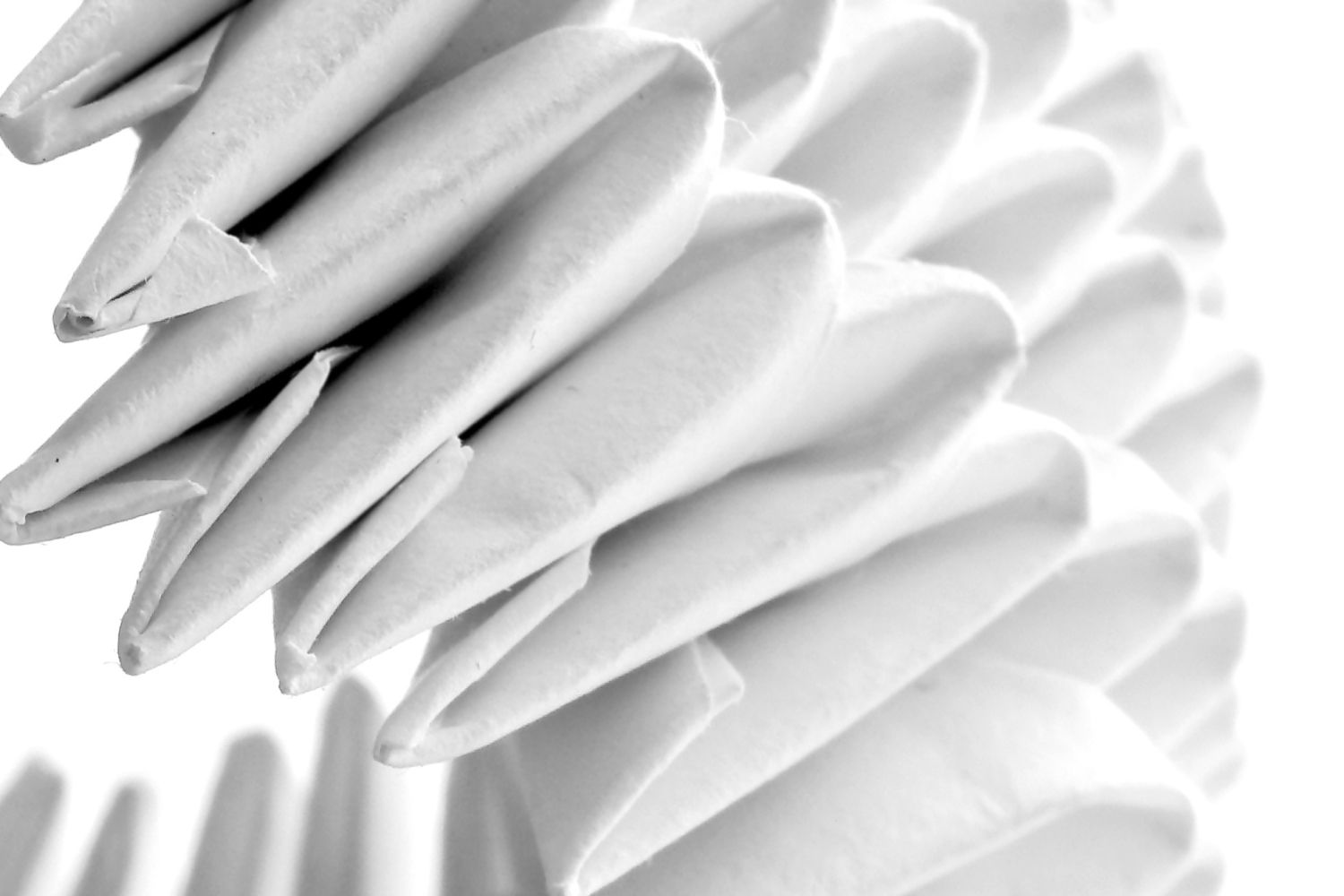
Unfolding the History & Evolution of Origami
by Mia Campbell
The Japanese art of folding has a lot of practical benefits we use today.
Origami is the ancient Japanese art of paper folding—but don’t confuse 'ancient' with 'outdated'. Its name literally translates to “folding paper,” and it typically involves folding a single square sheet of paper into a 3D sculpture without having to cut, glue, or tape.
Paper folding as an artform has appeared in several countries, including China’s papier-mache and Korea’s Hanji. And though paper-folding may be deeply rooted in Asian culture, its influences have spread to Europe and the United States in other ways, from how we fold dinner napkins to the way we make our beds.
Where Did Origami Come From?
+Paper was invented in China in 105 AD, and it’s believed that unique ways of folding paper emerged shortly after. Paper made its way to Japan by the 6th century, where paper folding became a Shinto ceremonial ritual before emerging as a fun (and sometimes therapeutic) art form.
Early origami works focused mainly on elements of nature, including birds, flowers, and animals. This was also the case with woodblock printing, another popular form of art during this time. Today, origami still takes on a nature-based motif—a true testament to the Japanese culture.
In the 19th century, origami was made famous in Frederich Frobel’s curriculum for kids. Paper folding as part of the many hands-on activities became an instant hit with the kids, and the practice soon spread throughout the world.
Frobel is known for introducing three types of folds: the Folds of Life (which introduced kids to the art of folding); the Folds of Truth (which were used to teach geometry); and the Folds of Beauty (which involved more advanced folding techniques using squares, hexagons, and octagons).
Around the year 1880, Frobel’s folds were introduced into Japanese schools, and it was around this same time that the word “origami” started circulating to describe the art of folding.
Exploring Fabric Origami
Over the years, fabric origami—using fabric instead of paper—has pushed the boundaries of creativity. We see examples of origami in fabrics in a number of outlets, including napkin folding, towel folding, quilting, clothing, and even toys.
Modern designer fashions draw inspiration from the art of origami. Designers Issey Mikaye and Stella McCartney use folds and pleats to create unique high-end fashion. A recent Stella McCartney collection echoed the stylings of sculptor Mariano Fortuny, who work in fashion included an innovative method of pleating that no other designer has been able to duplicate. The process involved very detailed pleating using silk. The pleats were hand-stitched and gave the fabric elasticity so that it hugged the body. Heating, a hidden pulley system, and heavy glass beads and counterweights were also part of the construction.
Junya Watanabe is well-known for folding textiles into geometric patterns and other three dimensional forms. These unique attributes add texture and dimension to their designs. One of the most popular was the use of a diamond-like pattern to recreate the golden ratio — a mathematical pattern that’s commonly found in nature. In mathematical terms, two quantities are in the golden ratio if their ratio is the same as their sum to the larger of the two numbers.
Fabric origami in clothing has a different name—orinuno. Folded fabric in this sense is considered an art form and is sewn onto clothing as part of the overall aesthetic. There are even festivals like the Masters of Origami in Japan that feature origami-style fashions.
The Art & Evolution of Folding
Origami has undoubtedly impacted our modern society, and not just in terms of art and fancy dinner party napkins. We fold our towels before storing them in the linen closet, as well as our clothes before shutting them in a drawer. We also fold our bedding to store after washing and even our sheets when making the bed.
Origami has carried over into the art of bed making, and just like origami can be a form of therapy and relaxation, so can the art of making your bed. Many people find it soothing to fold their bedsheets to get perfect creases or organise their bedding and pillows each morning to enjoy a more orderly life.
At Bedsmade we've perfected the art of making the bed with tailored sheets just for you - that will make the small things in life enjoyable.

